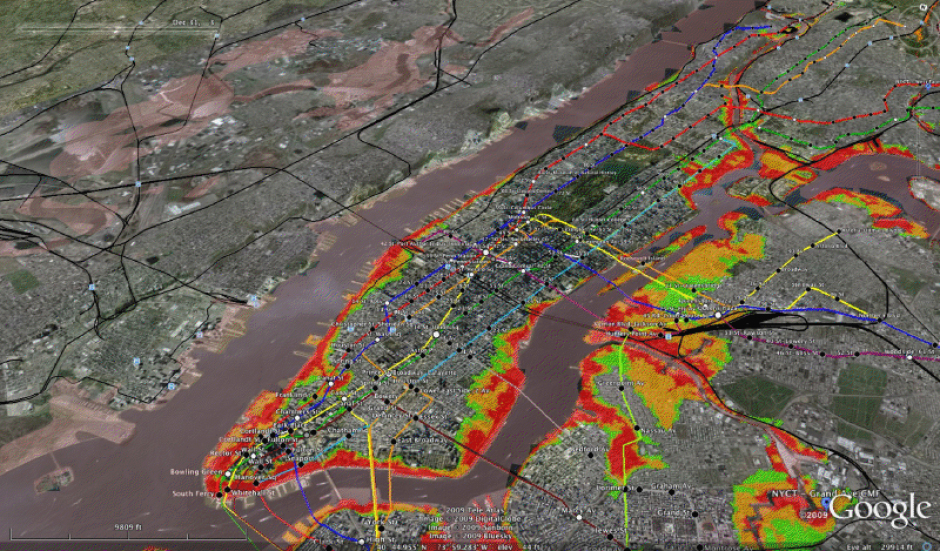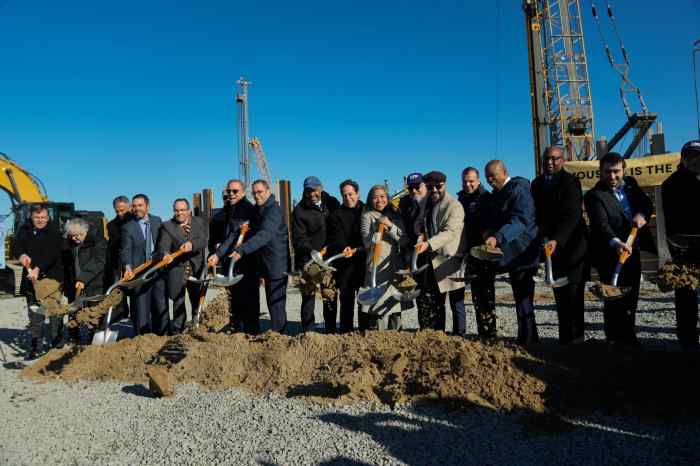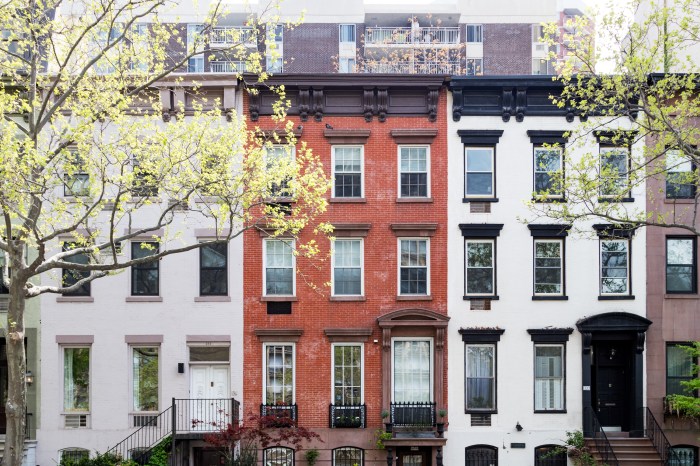BY BILL WEINBERG | Well, I’m back on my computer after four days of the electricity being out in Lower Manhattan, and finding my rage level is even higher than usual. Where to even begin?
For starters, with the most obvious reality. I am 50 years old and grew up in New York City. Never in my life have I experienced a storm of anywhere near this magnitude (actually prompting the mayor to announce a “mandatory evacuation” of low-lying areas) until Hurricane Irene last year — and now it just happened again, even worse (much worse) one year later with the Hurricane Sandy “Frankenstorm.” Pretty ominous evidence that something is way out of wack.
But first let’s talk about that “mandatory evacuation” of “Zone A” — the low-lying, shorebound parts of the city, including Lower Manhattan’s Alphabet City. It is true that it was “mandatory” in name only — no effort was made to enforce it — but even using the word sets a very dangerous precedent for abuse of executive powers. I’m unswayed by the argument that those who stayed (the big majority, it seems) were potentially putting first responders at risk. First, many simply had no place to go, and call-ins to WNYC from those who went to city-provided shelters indicated that they were ill-provided (some didn’t even have cots!), and some even violent.
More importantly, a look at what happened in New Orleans after Katrina — as well as what has been happening in Lower Manhattan already without a disaster during the past 20 years — will clue you in as to why working-class residents have a stake in resisting even ostensibly temporary displacement.
Even without an enforced evacuation, the fl ooding of the East Village — the loss of several days worth of business as well as lots of spoiled produce — may help push some of the neighborhood’s remaining family-owned ethnic eateries out of business, to be replaced by yet more overpriced, pretentious yuppie joints. A further blow to the erstwhile working-class character of the Lower East Side.
One of my neighbors, who lives in a HUD building for seniors and the disabled, called me upset in the middle of the second night of the blackout, some 24 hours and change after the 14th St. Con Edison plant blew and Lower Manhattan was plunged into darkness. She said that the building superintendent, backed up by representatives from the city Offi ce of Emergency Management, knocked on her door, shined a flashlight in her eyes and ordered her out on no notice, saying “We’re evacuating!” This after building management took inadequate precautions to prepare for such contingencies — e.g. not purchasing an emergency generator after the 2003 blackout, despite promises to do so. My friend is disabled, and had no ability to walk down nine fl ights, much less in the dark — and much less still to spend days in a shelter not prepared to accommodate her special needs. However, the building’s residents simply refused to leave, preferring to face the prospect of being left with no services. So, again, the order was ultimately an empty one.
If you needed any more evidence of the class implications of “mandatory evacuation,” just turn to Hizzoner’s own words. At a press conference on the eve of the storm, Mayor Michael Bloomberg responded to a reporter’s question about how Sandy would affect the prisoners on Rikers Island. After assurances that the facility would remain “secure,” he stated: “Don’t worry about anybody getting out.”
Gee thanks, Mr. Sensitive! I guess it didn’t occur to Mike that we might be concerned about prisoners left to die, as happened in New Orleans. (Human Rights Watch reported in the wake of Katrina that the Orleans Parish Sheriff’s Department abandoned hundreds of inmates for four days as the fl ood waters rose; they weren’t fi nally evacuated until the water in the city’s jails had reached chest level.)
Bloomberg also said that all heat, hot water and elevators would be shut down in city Housing Authority buildings in the evacuation zone, adding, “If you live in Zone A, and you haven’t evacuated yet it is crucial you do so.”
Yet those in private buildings didn’t lose these services (at least not until the lights went out, when it was beyond anyone’s control). And everyone on the Lower East Side knows how much the real estate interests would like to get rid of the big public housing projects east of Avenue D — that last insurmountable obstacle to eastwardcreeping gentrification. If this “mandatory evacuation” thing becomes a yearly ritual, it seems nearly inevitable that one year the evacuated won’t be allowed back in, on one pretext or another.
Sitting in the cold and dark without Web access as Alphabet City was fl ooded (I live three blocks west of Zone A), I was obsessed by dark imaginings of the Indian Point nuclear power plant (just 30 miles up the Hudson River) going the way of Fukushima. (Recall that the disaster at Fukushima was not caused by earthquake damage, but by the tsunami flooding out the emergency generator, causing the reactor to go out of control when the electricity went down.) And it turns out we really did have a near miss at another area nuke plant.
The Oyster Creek plant in Forked River, N.J., was placed on “alert” by the federal Nuclear Regulatory Commission as water rose outside the facility, threatening the cooling system. An “alert” is the secondlowest designation in the N.R.C.’s four-tiered warning system, with the highest being a “general emergency.” Forked River is some 80 miles from New York City, which is still much closer than Fukushima is to Tokyo.
Authorities took the precaution of shutting down some (not all) of the reactors at Indian Point, Nine Mile Point near Syracuse, N.Y., and the Salem plant on the Delaware River in New Jersey. My morbid fantasies were not, it seems, so far-fetched.
And another, lesser, industrial disaster actually happened. New Jersey environmental officials reported as the storm hit that adiesel fuel storage tank at a Motiva company facility in Woodbridge was lifted and ruptured from the surge, spilling 336,000 gallons into Arthur Kill, the narrow waterway separating Jersey from Staten Island. Hired contractors are reportedly working to contain the spill.
Longtime New Yorkers will recall that there was a half-million-gallon oil spill from an Exxon pipeline into Arthur Kill on New Year’s Day 1990 (almost exactly nine months after the Exxon Valdez disaster in Alaska’s Prince William Sound). It was big news at the time, Arthur Kill being a critical waterfowl habitat. Herons and egrets had just started to return there following an effort to clean up decades of industrial pollution along the kill (an old Dutch word for creek), when Exxon dealt them a whammy. After the 1990 spill was cleaned up, the critters returned again — and have now been dealt another whammy. But news accounts of the new spill aren’t even making note of the one 22 years ago, and the new one is likely to go practically unnoticed amid the larger disaster.
The oil spill carries a particular grim irony, since the new superstorms are a harbinger of devastating climate change, brought on by fossil-fuel consumption. One glimmer of hope to come out of the Frankenstorm is Bloomberg’s belated decision to endorse Obama as the candidate who will tackle climate change. We are constantly being admonished that no single weather event can be attributable to climate change. But when taken together — the superstorms, this summer’s crippling drought in the Midwest, the disappearing Andean glaciers, receding Arctic sea ice cover, Alaskan villages disappearing beneath the waves — whether these are attributable to climate change becomes a dramatically wrong question. Together, these phenomena are climate change. Asking if they are “attributable” to climate change is a classic example of missing the forest for the trees.
On the question of climate change, where you stand depends on where you sit. It seems that New York City is joining Tuvalu and the Maldives as places where there are no climate change skeptics. And we should certainly place no faith in Obama’s technocratic pseudo-solutions, like “carbon trading” or the repugnant oxymorons of “clean coal” and “safe nuclear power.” These ideas must be vigorously opposed. But acknowledging that climate change exists is the necessary prerequisite for even having that debate. So it is cutting neither Bloomberg nor Obama any slack to recognize the endorsement as a positive development — potentially.
Amid the disaster in New York, there were actually some inspiring examples of the community-based, alternative-technology solutions coming into fruition. On Avenue C, members of Time’s Up! environmental group used a bicycle-powered generator to pump water out of C-Squat’s basement, winning some favorable press play for this innovation.
But of course such gestures are most important as “propaganda of the deed.” What really and urgently needs to happen is still completely taboo to even mention in mainstream discourse: the public expropriation of the entire machinery of Detroit and the oil companies, and the redirection of their vast technological and fi nancial resources into mass transit and the reshaping of our communities and workplaces to accommodate the human organism, and human-powered transport like bicycles, rather than the private automobile. Maybe, just maybe, the growing frequency of Sandy-type disasters — hitting such nerve centers of the capitalist leviathan as Lower Manhattan — can make such ideas speakable, in time to stave off the planetary apocalypse of a complete destabilization of the biosphere.
A final, related point. With the electricity out throughout Manhattan south of 39th St., negotiating intersections on my bicycle was a bit of a challenge (no traffi c lights). At the larger intersections a traffi c cop was on duty, but motorists, pedestrians and bicyclists were left to their own devices at most. Some motorists were considerate, careful and slow, making sure the intersection was clear before proceeding. But too many took the attitude that no lights meant no rules, and just barreled through the intersection heedless of anyone who might be in the way — the worst exponent of car culture.
It’s a cliché that crisis brings out the best and worst in human nature, but this banal observation has little-recognized social implications. On my bike in the blacked-out streets, I recalled reports of how crime went down and traffi c calmed in Benghazi in the heady weeks after the collapse of the Qaddafi regime in Libya — when the people were in control, before the revolution deteriorated into a government. I was also reminded of how New Yorkers were notoriously and uncharacteristically polite and sensitive with each other in those shell-shocked weeks after 9/11. Then, inevitably, things went back to “normal” (or, in the case of Benghazi, worse than normal where chaotic violence is concerned).
And already, with the Sandy disaster barely having passed, the pathological state of “normality” is returning to New York. For instance, the high-occupancy vehicle restrictions on the arteries leading into Manhattan are being lifted. Instead, they should be made permanent.
Oh yeah, one last thing. Throughout the four days of blackout, people were stumbling around my neighborhood like zombies, looking desperately for a place to charge their cell phones. This wasn’t an issue for me whatsoever, because I only have a land line — even after the lights went out, I never lost phone service for a minute. Glorious vindication after all the abuse I have taken for clinging dinosaur-like to this supposedly outdated technology. So, more than ever, this is my reply to the forces of wireless market-totalitarianism:
YOU CAN HAVE MY LAND LINE WHEN YOU PRY IT FROM MY COLD, DEAD FINGERS!
Weinberg blogs at WorldWar4Report.com


















